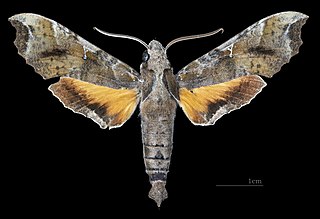
Callionima calliomenae is a moth of the family Sphingidae.

Callionima nomius, the fan-tailed bark moth, is a moth of the family Sphingidae. The species was first described by Francis Walker in 1856.
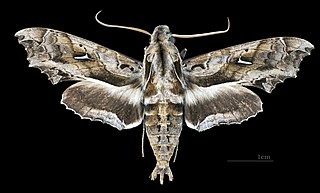
Hemeroplanes triptolemus is a moth of the family Sphingidae.
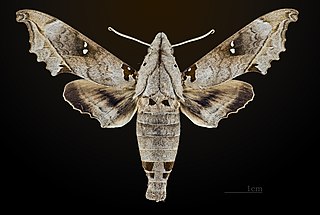
Madoryx oiclus is a moth of the family Sphingidae. It is known from Suriname, French Guiana and from Venezuela to Costa Rica. It has also been recorded in Paraguay, Argentina and Bolivia.

Pachylia ficus, known as the fig sphinx, is a moth of the family Sphingidae. It lives from the northern tip of South America in Uruguay through Central America to the southern tip of the United States straying into Arizona and Texas.

Eumorpha capronnieri is a moth of the family Sphingidae first described by Jean Baptiste Boisduval in 1875.

Eumorpha vitis, known as the vine sphinx, is a moth of the family Sphingidae.

Nephele subvaria is a species of moth in the family Sphingidae.

Xylophanes amadis is large moth of the Family Sphingidae.

Manduca brasiliensis is a moth of the family Sphingidae.
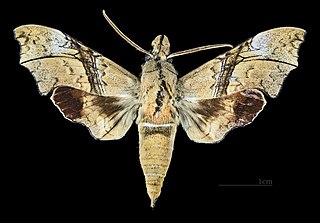
Aleuron iphis is a moth of the family Sphingidae. It was described by Francis Walker in 1856

Xylophanes germen is a moth of the family Sphingidae. It is known from Mexico, Costa Rica, Guatemala and is found from Venezuela to Bolivia.

Xylophanes mirabilis is a moth of the family Sphingidae. It is known from Colombia.
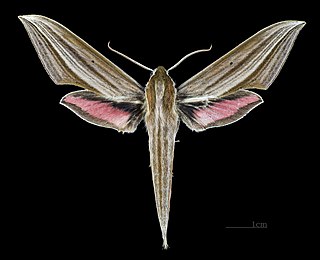
Xylophanes neoptolemus is a moth of the family Sphingidae.
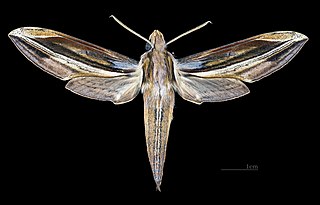
Xylophanes pyrrhus is a moth of the family Sphingidae.
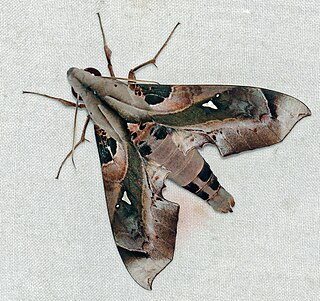
Madoryx plutonius is a moth of the family Sphingidae.
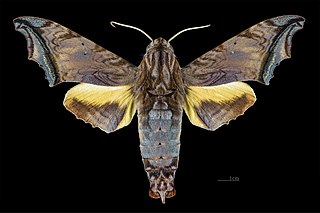
Nyceryx stuarti is a species of moth in the family Sphingidae.

Nyceryx magna is a moth of the family Sphingidae.

Eumorpha obliquus is a moth of the family Sphingidae. It is found from Belize, Guatemala, Nicaragua and Costa Rica south to Bolivia. It is also present in Brazil and Guadeloupe.

Ambulyx substrigilis, the dark-based gliding hawkmoth, is a species of moth of the family Sphingidae. It was described by John O. Westwood in 1847.
























